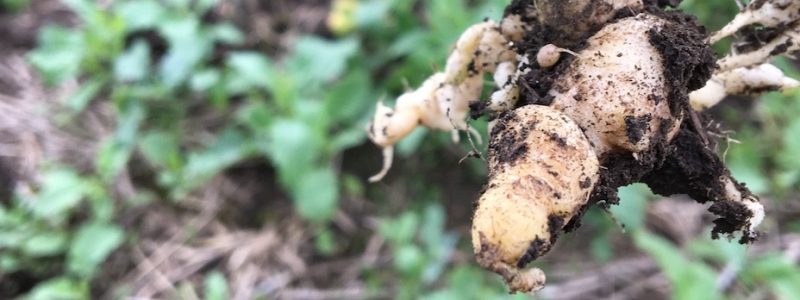
Evaluation of clubroot disinfectants
Bleach (sodium hypochlorite) was most effective in killing clubroot (Plasmodiophora brassicae) spores at concentrations above 1.7%. Spray Nine was almost as effective, while 5 other products achieved greater than 95% control.
Sanitation of equipment, vehicles, scouting tools and footwear is an important part of preventing the spread of clubroot spores. Sanitization involves cleaning to remove soil and plant debris, and then disinfecting with a chemical that will kill the resting spores of the clubroot pathogen to prevent the spores from moving from field to field.
New research by Alberta Agriculture and Forestry completed in May 2019 looked at 24 disinfectants that are registered for other uses in Canada on commonly occurring bacteria, fungi and viruses. They were evaluated for effectiveness on the clubroot pathogen with its very durable, hard-to-kill resting spores. Of the 24 disinfectants evaluated, 7 were able to kill greater than 90% of clubroot spores when left in contact with the disinfectant for 20 minutes.
Bleach was the most effective
The most effective disinfectant was sodium hypochlorite (bleach) and it was able to kill nearly 100% of the resting spores at concentrations above 1.7% sodium hypochlorite.

Spray Nine was almost as effective
The second most effective disinfectant was “Spray Nine” which killed almost 100% of the resting spores. Spray Nine comes as a ‘ready-to-use’ product and is used undiluted. The product contains ethoxylated C9-C11 alcohols and dipropylene glycol monobutyl ether as active ingredients. It is used as a multi-purpose cleaner/disinfectant in the automotive industry and around the household. It is commonly available at automotive stores in different container sizes including bulk containers. A 20-litre pail was listed on-line at $157 spring 2019.

Source: Harding et al. 2019
Several others control greater than 95% of spores
The third most effective products were chlorinated degreasers called Adhere NC and Premise Degreaser, which killed > 95% of spores at product concentrations of approximately 10%.
The fourth most effective product was AES 2500 which achieved 95% spore mortality at product concentrations above 50%. Finally, ethanol and SaniDate could kill > 95% of spores at concentrations of 75% and 90% respectively.
The researchers concluded that 2% sodium hypochlorite solution was clearly the best disinfectant for killing clubroot spores. It is inexpensive, readily available at many stores, and is very effective at low concentrations. However, bleach can be hard on equipment as it induces corrosion, causes hardening of rubber material and seals/gaskets and stains/damages clothing. These other products may provide an alternative with less harmful side effects.
Tips for preparing, using, and storing bleach solutions
- Check the product label for the concentration of sodium hypochlorite in the product
- Dilute the product with tap water to obtain a 2% sodium hypochlorite solution
- Store all bleach solutions in a sealed container in a cool dark place to prevent inactivation by heat or light. When stored in a cool dark place, bleach will maintain its activity for up to 1 year. However, when stored at room temperature bleach loses about 1% sodium hypochlorite every 100 days. In the cab or bed of truck, its activity would decay much more quickly. Here are some rules of thumb:
- Bleach solutions stored at 4° C in the dark should be replaced at least once each year
- Bleach solutions stored at room temperature should be replaced every 2 months
- Bleach solutions stored in a vehicle or outdoors should be replaced weekly
- Bleach solutions that have come into contact with soil or organic matter should be replaced immediately.
- When in doubt regarding the activity of a bleach solution – prepare a fresh solution, or use a chlorine test strip to obtain an estimate of its effectiveness.
- A 2% bleach is significantly more concentrated than normal “household bleach” products. Therefore 2% bleach is potentially harmful to the applicator. Contact with skin or inhalation of fumes should be avoided. Do not mix bleach with other chemicals. Always follow label and SDS recommendations for PPE and safe handling, storage and disposal.
With all disinfectants, ensure that soil has been cleaned from equipment, tools and footwear, as soil itself cannot be disinfected. Footwear and tools should remain in contact with the disinfectant for 20 minutes to ensure effectiveness.
This work was sponsored by Growing Forward 2 and Alberta Agriculture and Forestry.
Harding, M., Hill, T.B., Daniels, G.C. 2019. Clubroot Killers.
Photo by Dan Orchard.


